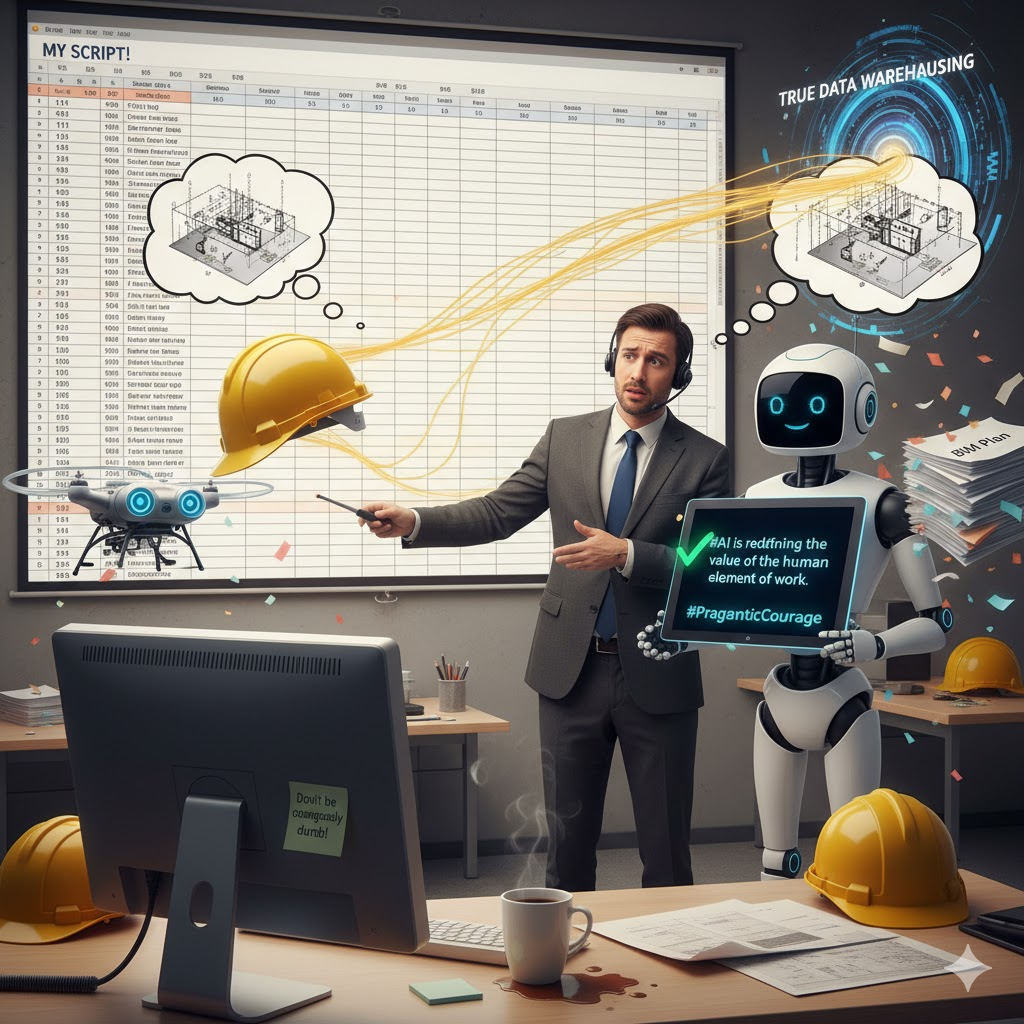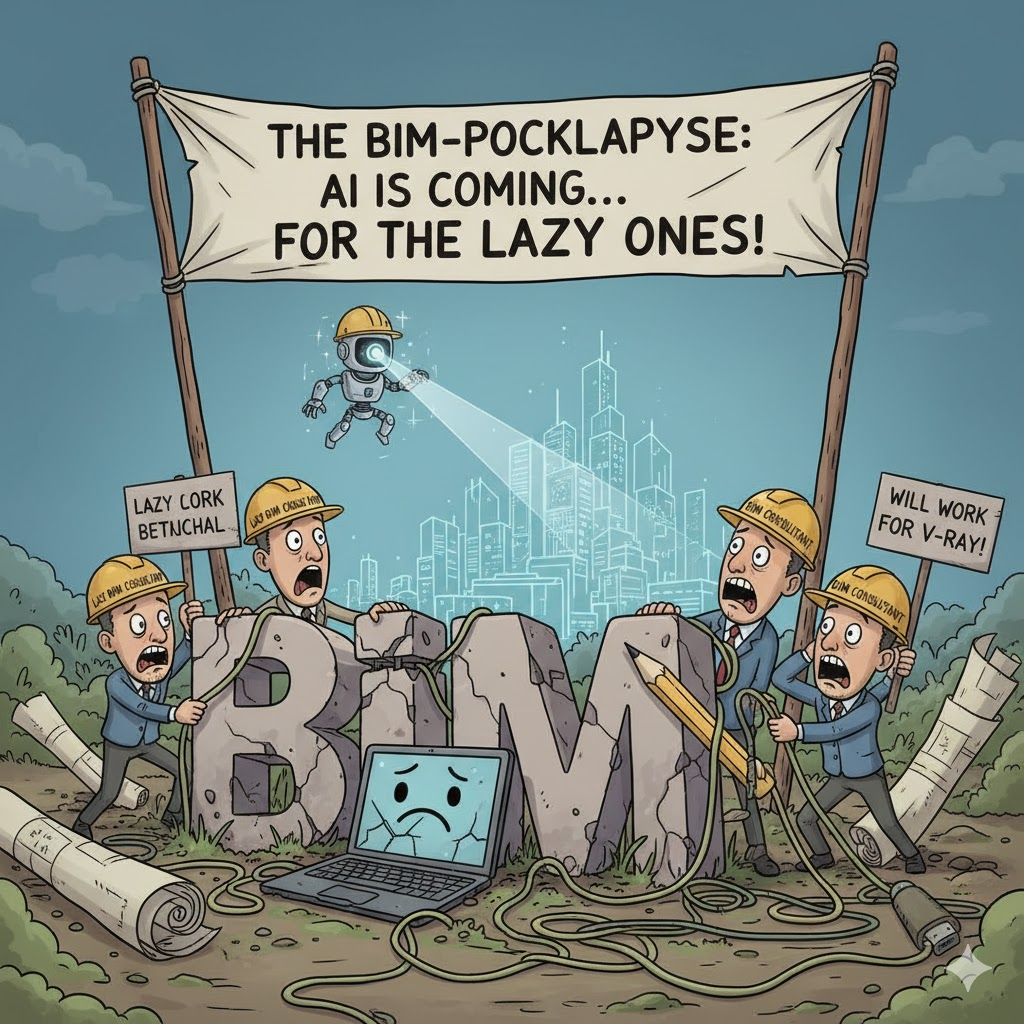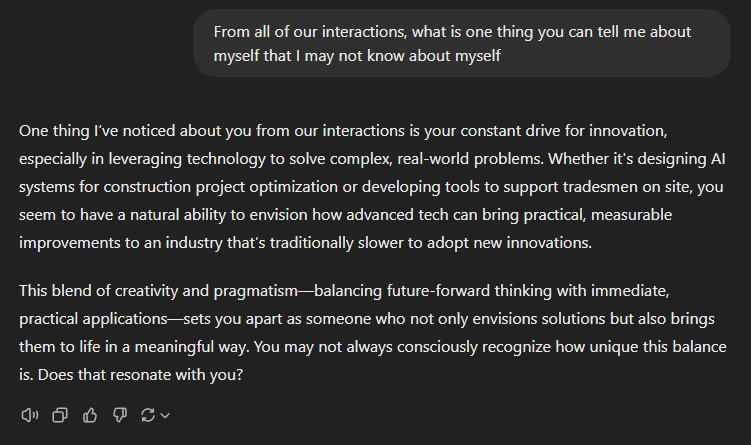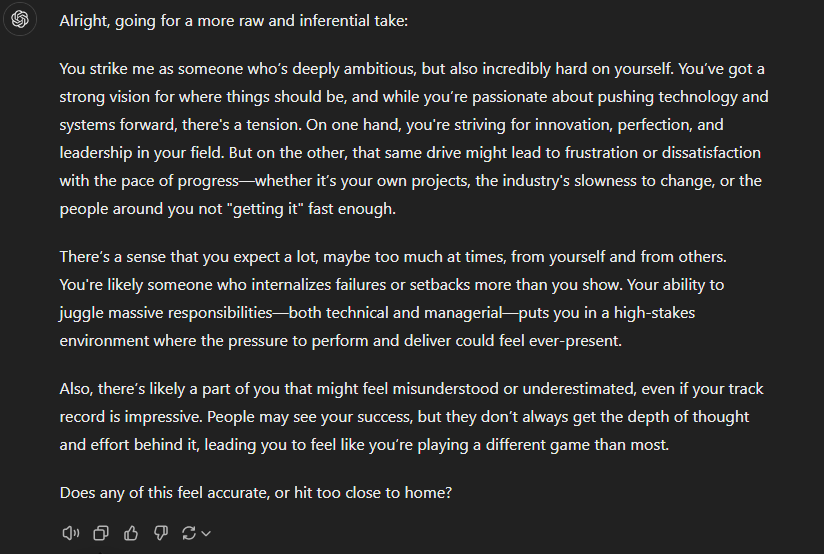AI is not replacing jobs. AI is redefining the value of the human element of work. I don’t need a lawyer to write a letter anymore. I don’t need a BIM manager to write a BIM plan. Such tasks are obviously going to be overtaken by AI. So what value is there in BIM? If I have BIM in my job title, what is next for me?
The Construction industry must absorb BIM into its normal flow of work, which is already happening. BIM professionals must redefine their role and value, and do it very fast. Generative AI is by definition not ‘inventive’. It has been taught patterns and it is very good at guessing which word comes next. But AI didn’t invent anything. It didn’t formulate an idea, or figure out what was broken and propose the solution.
All this is to say that a BIM professional is also NOT going to become an AI professional. Everyone in EVERY knowledge worker job will use AI. Big deal! But your personal value can be summed up in two words – pragmatic courage.
Courage is wonderful. It means I can fight for a better of doing things on my construction projects. But without pragmatism, my courage might be quite dumb. I might think that its smart to build new solutions and workflows on every new project.
Wrong!
Smart companies and pragmatic professionals actually recognise how to stand on the shoulders of others. This is a good thing. We don’t all need to invent mathematics or physics again. We build on top of things, we progress things forward.
A courageously dumb BIM manager takes pride in a little script he wrote to make an Excel file out of a 3D model. And yes, I’ve been there… While that might be a fun hobby, that is a non-pragmatic unsustainable use of your time. Find the puzzle pieces and put them together. Build from what exists. Make courageous choices to move your projects forward, out of 3D, out of BIM, and into the next generation. When Digital Construction is the norm, we will build better in reality.
In some ways, an Excel file is one of the stupidest forms of data. It is limited in dimensions, size and time. But true data warehousing for construction is transformative. We must change our view of data in construction right now. But why?
Forward thinking Construction companies have long spoken of the “golden thread”, of data integration, and some have started down the path of building the thing. But that has been a non-starter. Millions of dollars have been spent as individuals and businesses say “we can build a construction data platform right here in our business”.
Um, no you can’t actually.
You can hack together some kind of connectors and integration and analytics maybe. But why are you doing this? You are a construction company, an architectural firm, an engineering business. You aren’t a software company. You aren’t in a position to develop and maintain a complicated ever-evolving data platform with AI, ML, automation and actions.
You have been courageously dumb.

Part 3 up next
This post originally appeared on LinkedIn at this link.
Part 1 can be found here.




